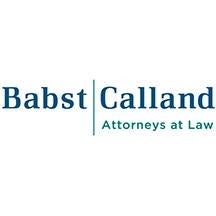On November 14, 2022, the Department of Defense (DoD), General Services Administration (GSA), and National Aeronautics and Space Administration (NASA) published a proposed Federal Acquisition Regulation (FAR) rule that would require certain federal suppliers to annually disclose their greenhouse gas (GHG) emissions and climate-related financial risks, as well as set GHG emissions reduction targets, on an annual basis. 87 Fed. Reg. 68,312 (Nov. 14, 2022) (Proposed Rule). The Proposed Rule entitled the “Federal Supplier Climate Risks and Resilience Rule” implements President Biden’s Executive Order 14030, directing a number of federal agencies to take action to address climate-related risks and the Administration’s push toward net-zero emissions procurement by 2050.
The Proposed Rule would introduce a new FAR subpart 23.XX containing mandatory GHG emissions[1] disclosure and reporting requirements for major federal suppliers, which are divided into “significant” and “major” contractors for purposes of the applicable requirements. “Significant contractors,” defined as federal contractors receiving at least $7.5 million but less than $50 million in federal contract obligations in the prior fiscal year, must conduct a GHG inventory of their annual Scope 1[2] and Scope 2[3] emissions and report the total annual emissions in the System for Award Management (SAM). “Major contractors,” defined as federal contractors receiving more than $50 million in federal contract obligations in the prior fiscal year, are subject to the same requirement with respect to Scope 1 and Scope 2 emissions and must also conduct and report the results of a GHG inventory of their annual Scope 3[4] emissions.
Major contractors are also required to use the Carbon Disclosure Project (CDP)[5] Climate Change Questionnaire annually to complete a publicly available disclosure of their Scope 1, Scope 2, and Scope 3 emissions as well as their climate risk assessment process and any risks identified. In addition, major contractors must identify and publicly disclose science-based targets to reduce their GHG emissions.
Under the proposed regulatory framework, a federal supplier is presumed to be nonresponsible (and therefore ineligible for contract awards) until the relevant contracting officer confirms that the contractor has (itself or through its immediate owner or highest-level owner, as defined in the FAR), complied with the applicable requirements of the Proposed Rule.
Certain entities are exempted from the Proposed Rule’s reporting and disclosure requirements, including higher education institutions, nonprofit research entities, state or local governments and federal management and operating (M&O) contractors which derive at least 80 percent of their annual revenue from such M&O contracts. Additionally, if a major contractor qualifies as a “small business” or is a nonprofit organization, it is subject only to the reporting requirements of a significant contractor. The requirements may also be waived by the Senior Procurement Executive for emergencies, national security, or other mission essential purposes.
Significant and major contractors will be required to report Scope 1 and Scope 2 emissions one year following the publication of the final rule. Major contractor requirements to disclose Scope 3 emissions, climate-related risks, and science-based targets begin two years following the publication of the final rule.
If this Proposed Rule is finalized, many companies with government contracts, particularly small businesses, will be required to calculate and report GHG emissions and climate-related financial information for the first time. Preparations of such disclosures is costly and may require the hiring of new personnel or outside contractors to complete calculations and compile and organize information. In addition, companies without government contracts may be asked by customers or suppliers with government contracts to estimate or account for their GHG emissions as part of the supply chain. Finally, public disclosure of climate-related financial information could subject companies to litigation risk by shareholders, investors, or non-governmental organizations.
DoD, GSA, and NASA will accept comments on the Proposed Rule until January 13, 2023 (extended to February 13, 2023) on the Federal e-rulemaking portal (www.regulations.gov).
FOOTNOTES
[1] GHG is defined to include carbon dioxide, methane, nitrous oxide, hydrofluorocarbons, perfluorocarbons, nitrogen trifluoride, and sulfur hexafluoride.
[2] “Scope 1” emissions are GHG emissions from sources that are owned or controlled by the reporting company.
[3] “Scope 2” emissions are GHG emissions associated with the generation of electricity, heating and cooling, or steam, when these are purchased or acquired for the reporting company’s operations but occur at sources other than those owned or controlled by the entity.
[4] “Scope 3” emissions are GHG emissions that are a consequence of the operations of the reporting entity but occur at sources other than those owned or controlled by the entity.
[5] The CDP is a nonprofit organization that runs a disclosure system for companies, cities, states, and regions to manage environmental impact and scores these entities based on questionnaires submitted.






 />i
/>i

